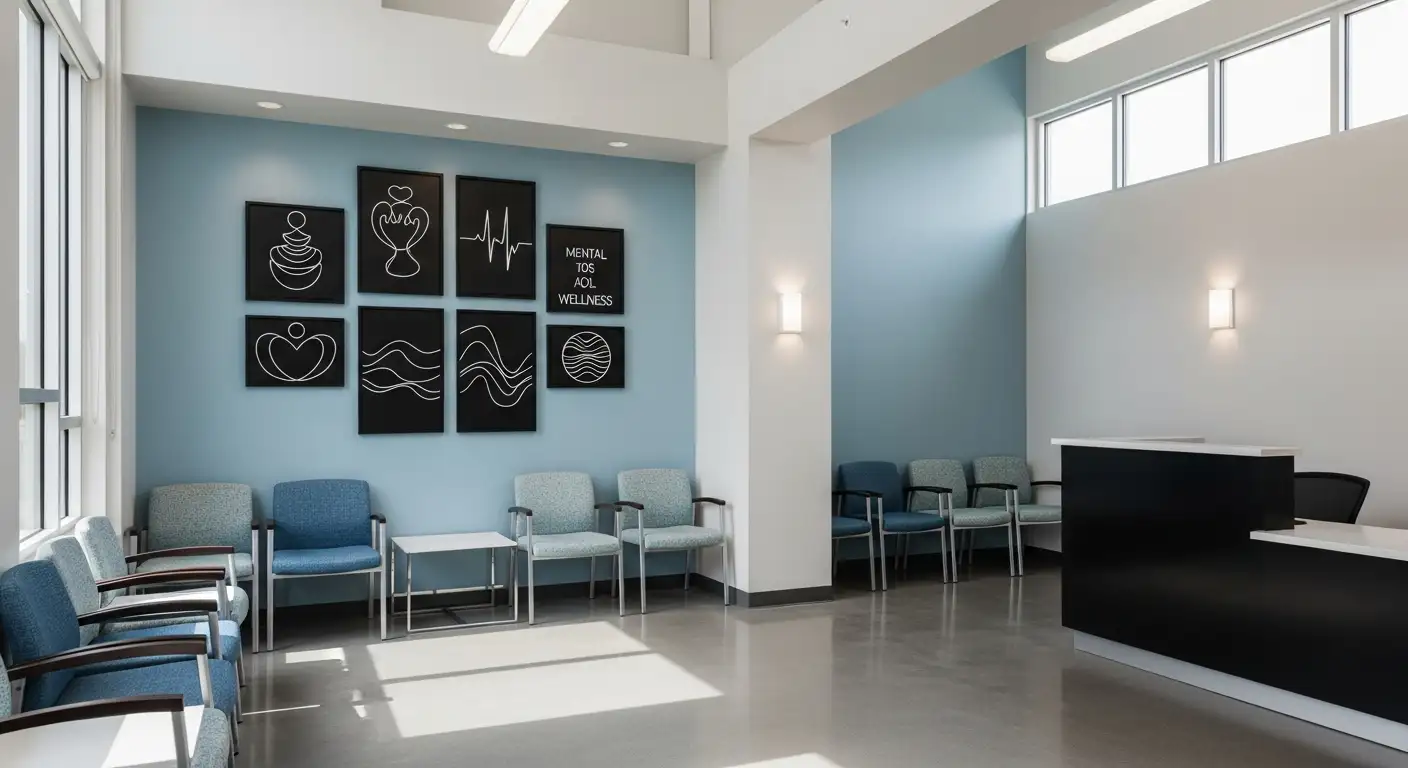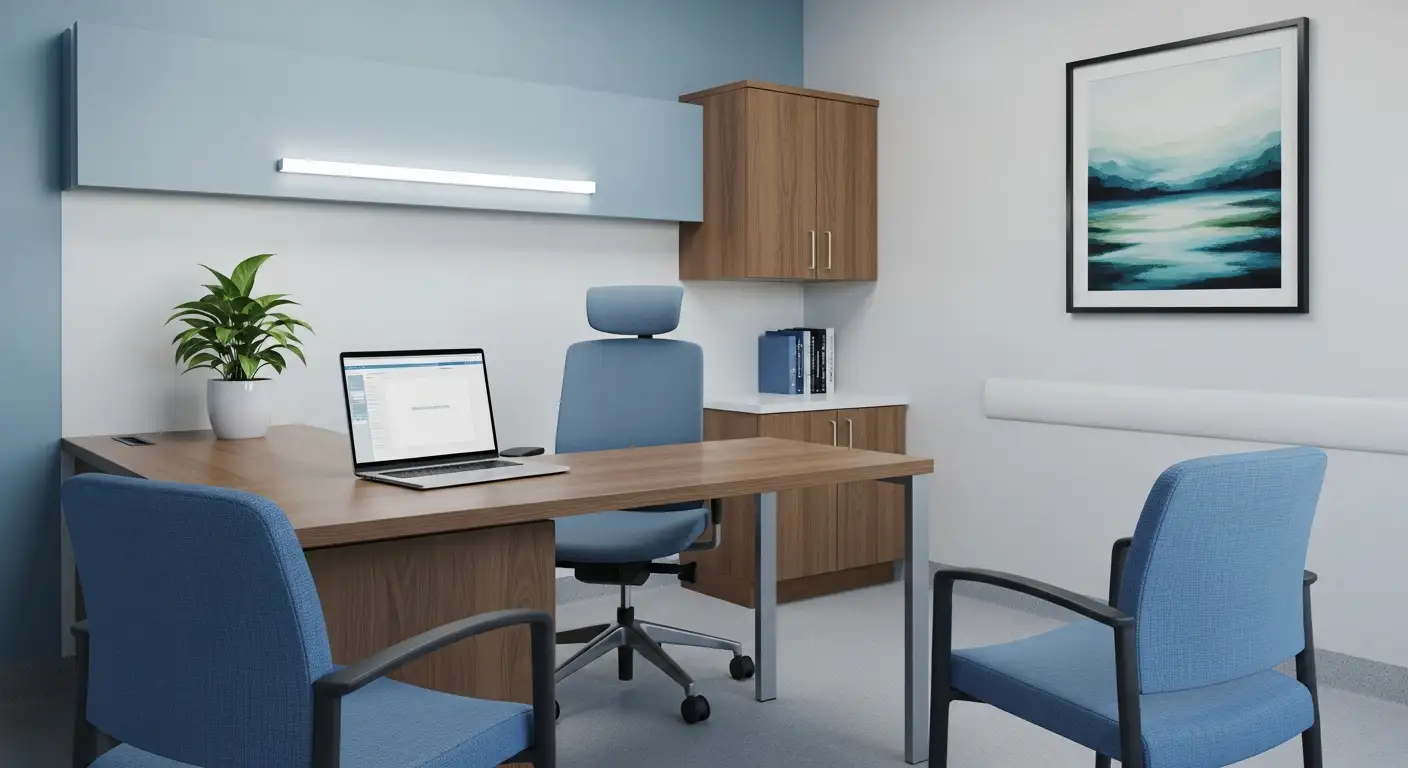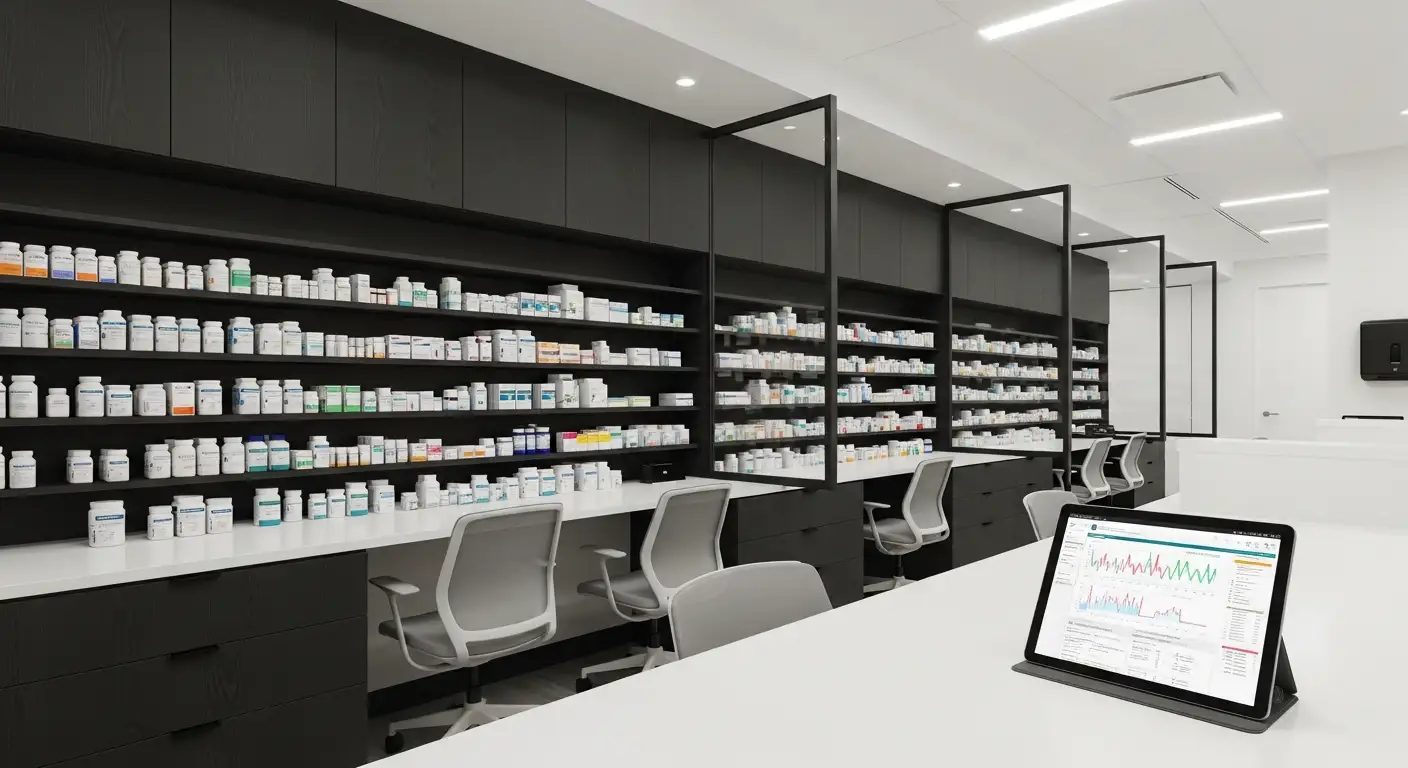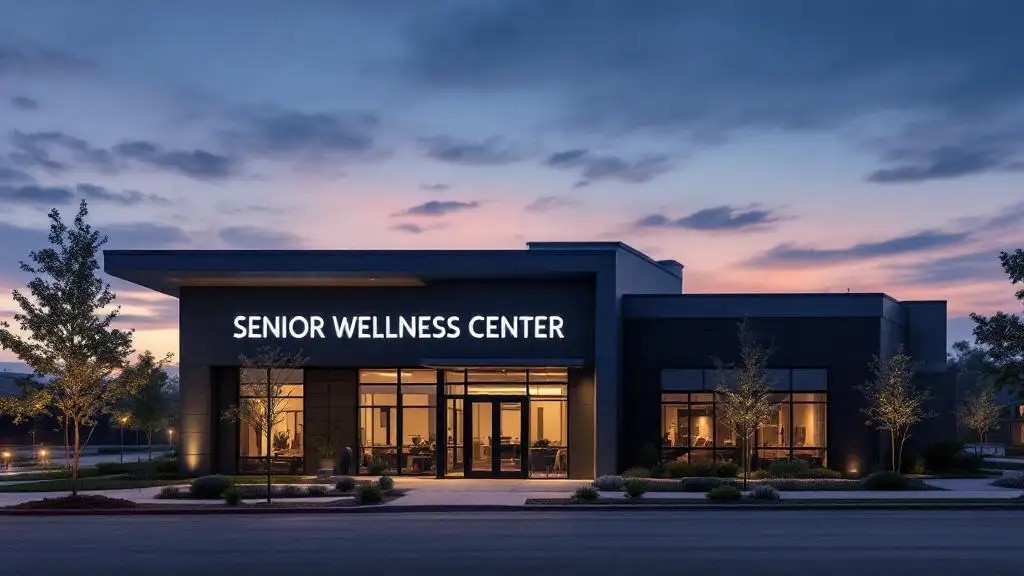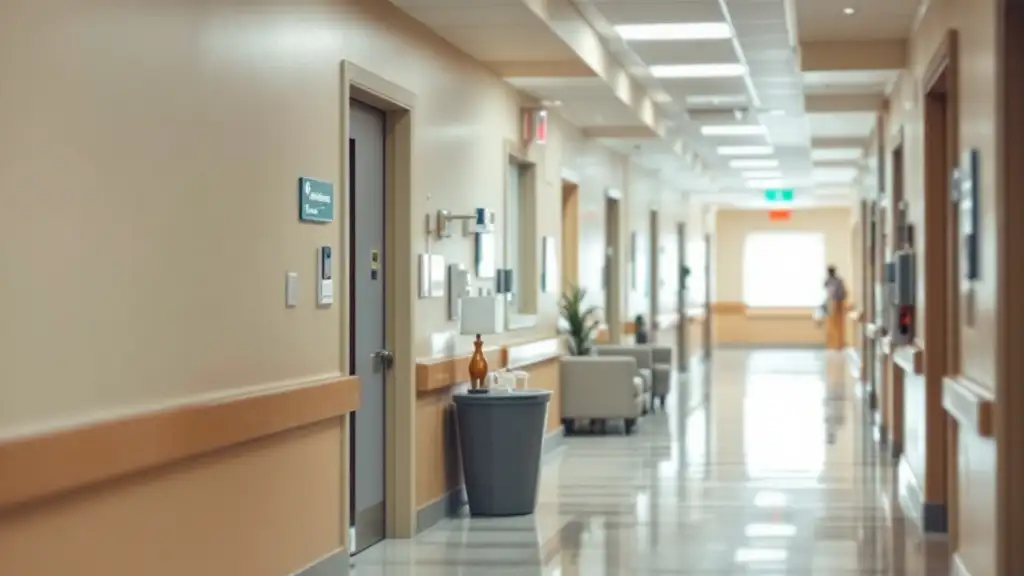Understanding the Growing Need for Evidence-Based Psychotherapy in Aging Populations
As the population ages, the incidence of substance use disorders (SUDs) and co-occurring mental health issues among older adults is rising significantly. Despite misconceptions that addiction and mental health challenges primarily affect younger individuals, recent data reveals that approximately 1 in 11 adults aged 60 and older are affected by substance use disorders, with alcohol being the most commonly misused substance. Physiological changes due to aging complicate substance use and treatment, making specialized, evidence-based psychotherapy methods essential. This article explores the comprehensive, scientifically supported treatments tailored to meet the unique needs of aging adults battling substance use and mental health challenges, emphasizing effective combination therapies, medication-assisted treatments, and supportive psychosocial interventions.
The Epidemiology and Challenges of Substance Use in Older Adults
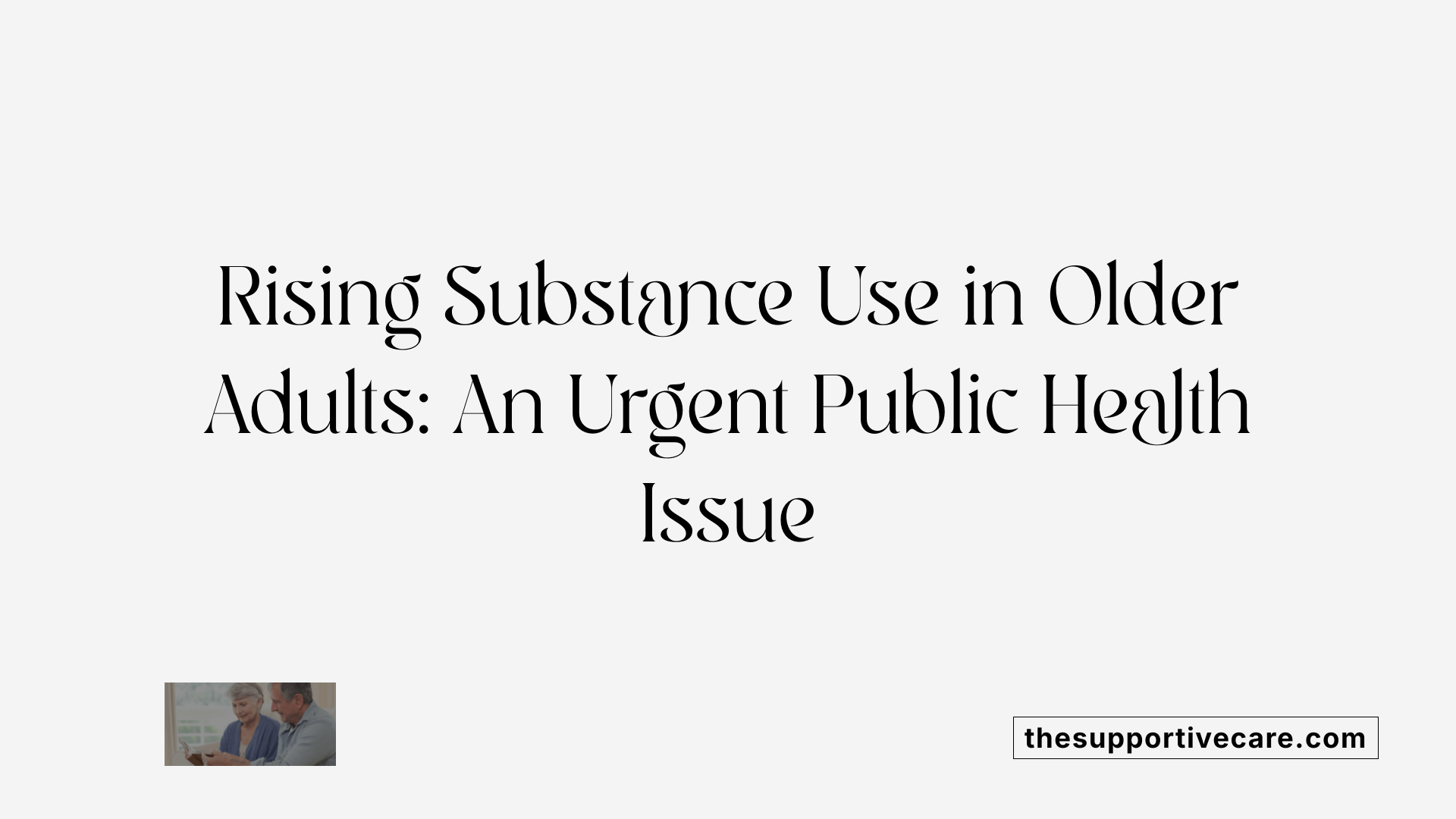
What is the prevalence of substance use disorders among aging adults?
Substance use disorder affects approximately 1 in 11 adults aged 60 and older as of 2022, with the trend rising over recent years, including during the COVID-19 pandemic. This reveals an increasing need to address substance misuse within this growing age group.
Which substances are commonly misused in older adults?
Alcohol remains the most frequently misused substance among older adults, with notable increases in binge and heavy drinking patterns, particularly among women. Cannabis use among adults 65 and older also surged by 75% between 2015 and 2018, often driven by medical concerns such as managing pain, arthritis, sleep difficulties, anxiety, and depression.
What physiological and cognitive risks do substance use pose to older adults?
Physiological changes with aging, including reduced liver function and decreased muscle mass, affect the body's processing of alcohol and drugs. This increases vulnerability to harmful drug interactions, falls, accidents, and cognitive decline. Research indicates that reducing or eliminating harmful substance use could help protect cognitive function and potentially delay or prevent dementia progression.
What challenges exist in detecting substance use in older adults?
Detecting substance use disorders in older populations is challenging because symptoms often mimic other medical conditions or are mistaken for normal aging-related changes. Routine screening by healthcare professionals is essential for early detection, as substance misuse can be easily overlooked or misdiagnosed in this demographic.
The Role of Behavioral Health Treatments in Managing Alcohol Use Disorder (AUD)
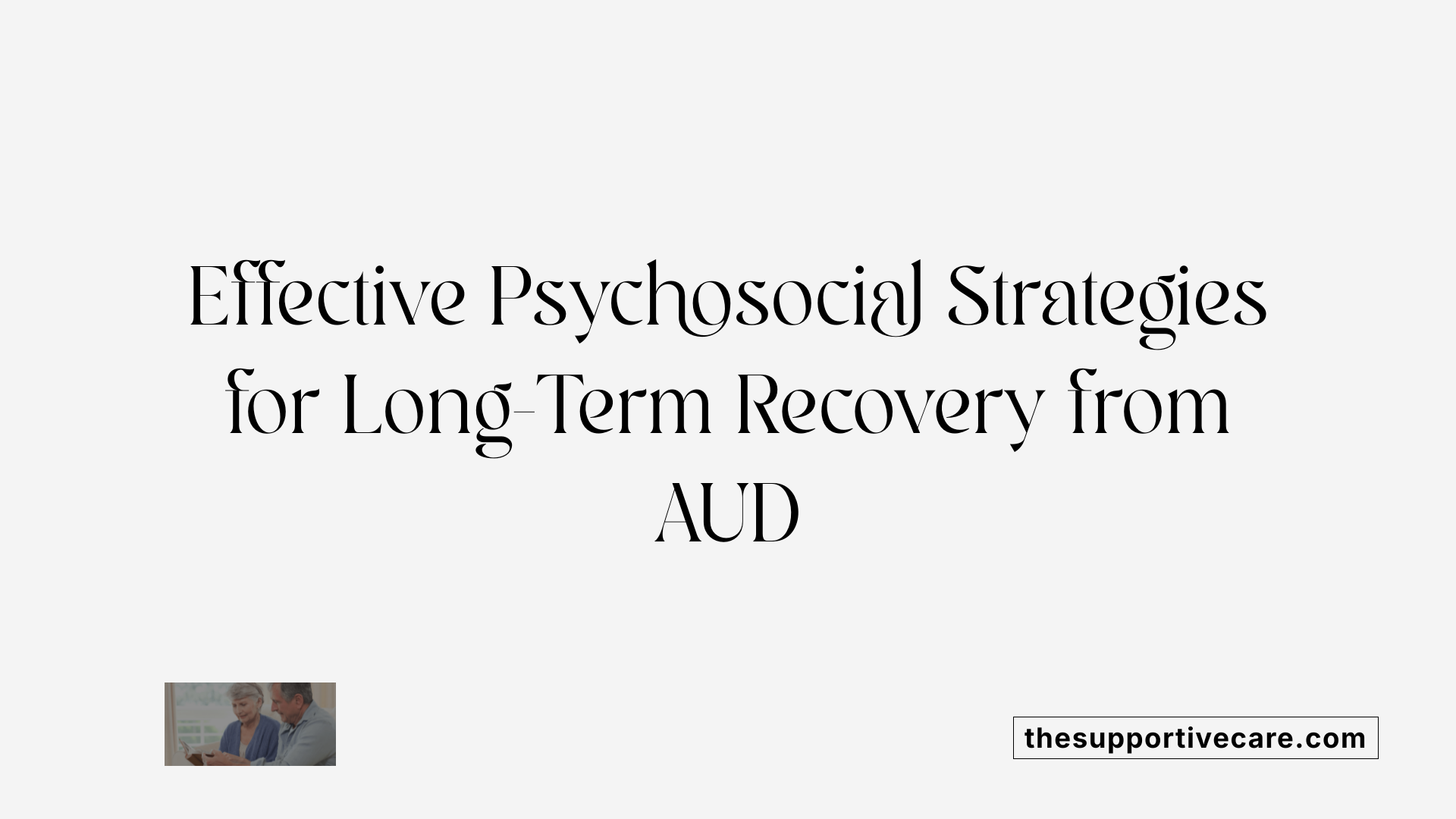
What Are the Goals of Behavioral Health Treatments for AUD?
Behavioral health treatments for Alcohol Use Disorder (AUD) primarily aim to help patients achieve personal recovery goals, manage triggers that lead to drinking, develop effective coping skills, and improve interpersonal relationships. These objectives support lasting behavior change and promote overall well-being.
What Are Some Evidence-Based Psychosocial Treatments?
Several evidence-backed therapies play a critical role in treating AUD. Cognitive-behavioral therapy (CBT) helps patients identify and reshape unhelpful thinking patterns that contribute to drinking. Motivational enhancement therapy (MET) focuses on increasing the patient’s internal motivation to change drinking behavior. Contingency management (CM) uses tangible rewards to reinforce abstinence and encourage adherence to treatment plans.
How Do Patients Develop Coping Skills and Manage Triggers?
Behavioral treatments emphasize recognizing high-risk situations and practicing coping strategies to avoid relapse. Therapists guide patients to identify emotional or environmental cues that increase the urge to drink and teach alternative responses to handle stress or cravings.
What Is the Role of Couples and Family Counseling?
AUD affects not only the individual but also their social environment. Couples and family counseling engage loved ones in the recovery process, improving communication, addressing relationship challenges, and providing education about AUD. This support network is vital for sustained recovery.
How Does Twelve-Step Facilitation Therapy Support Recovery?
Twelve-step facilitation therapy encourages active involvement in mutual support groups such as Alcoholics Anonymous. This approach promotes acceptance of the disorder, surrender to a recovery program, and engagement in community support, bolstering long-term abstinence and emotional support.
These behavioral health treatments can be tailored to fit individual needs, often combined with medications and other supports to enhance recovery outcomes from AUD.
Cognitive-Behavioral Therapy (CBT): A Cornerstone in Addiction Treatment
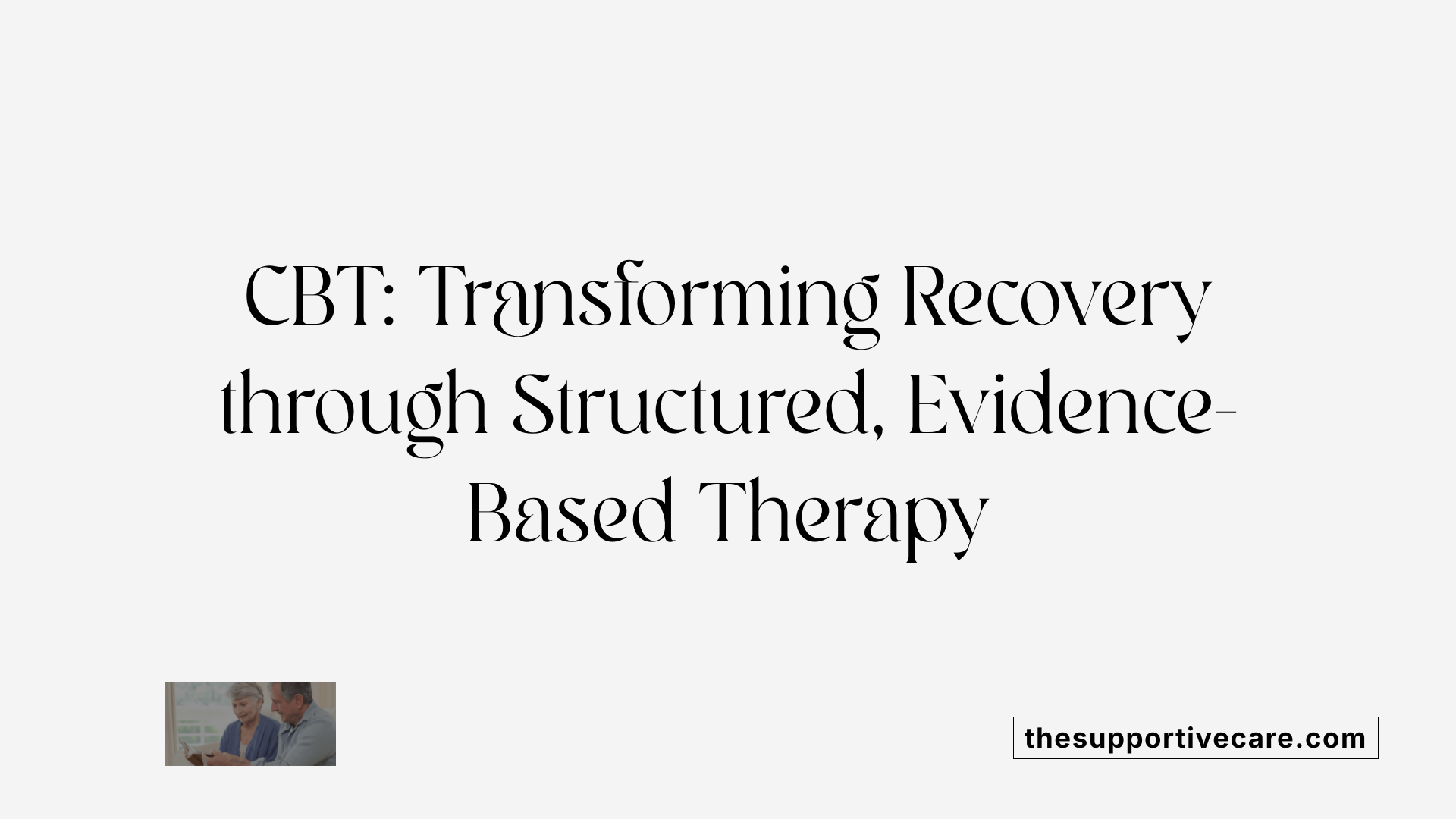
What is the structure and objectives of CBT for substance use and mental health disorders?
Cognitive-Behavioral Therapy (CBT) is a structured psychotherapy delivered in individual sessions with a mental health counselor. It focuses on identifying and reshaping negative thoughts and beliefs that contribute to addiction and related mental health symptoms. The therapy aims to help patients develop coping skills, improve emotional regulation, and manage triggers that lead to substance use. It also teaches relapse prevention strategies to support ongoing recovery.
How effective is CBT across substances including alcohol and stimulants?
CBT is highly regarded as one of the most effective treatments for a broad range of substances, including alcohol, cannabis, amphetamines, cocaine, heroin, and stimulants. It not only reduces substance use during treatment but also extends benefits beyond therapy by lowering relapse rates. Meta-analyses confirm CBT’s consistent positive impact on decreasing the frequency and quantity of substance use.
What is CBT’s role in relapse prevention and long-term abstinence?
Relapse prevention is a core component of CBT, focusing on helping individuals recognize high-risk situations and develop strategies to maintain abstinence. By reinforcing coping skills and building confidence, CBT plays a critical role in sustaining long-term recovery and minimizing the chances of returning to harmful substance use.
How effective is CBT when combined with pharmacotherapy?
Research shows that combining CBT with FDA-approved medications for alcohol use disorder (such as naltrexone, acamprosate, and disulfiram) enhances treatment outcomes. Although CBT’s benefits are comparable to other evidence-based behavioral therapies (like motivational enhancement therapy or contingency management) when used with pharmacotherapy, the combination generally leads to improved frequency and quantity of substance use reduction compared to pharmacotherapy alone. This integration supports comprehensive and effective addiction treatment.
How is CBT adapted for older adults with substance use disorders?
Adapting CBT to meet the needs of older adults involves tailoring interventions to address age-related physiological changes, co-occurring medical conditions, and cognitive differences. Tailored CBT in this population improves engagement and treatment outcomes, which are often comparable or better than younger groups. Early detection and age-specific modifications ensure CBT’s effectiveness in older adults struggling with substance misuse, particularly with alcohol, the most commonly misused substance in this age group.
Motivational Enhancement Therapy and Motivational Interviewing: Cultivating Internal Drive
How Does Motivational Enhancement Therapy Resolve Ambivalence About Substance Use?
Motivational Enhancement Therapy (MET) is a structured approach encouraging individuals to explore and resolve their mixed feelings about substance use. By fostering open and non-confrontational conversations, MET helps patients recognize the personal importance of change while respecting their autonomy.
Why Are These Techniques Especially Effective for Less Motivated or Younger Older Adults?
In populations who may be ambivalent or less motivated to change — including some younger older adults — MET and Motivational Interviewing (MI) shine. These techniques gently nurture internal motivation rather than imposing external pressure. This tailored encouragement is particularly useful when readiness to change varies widely.
In What Ways Do These Therapies Improve Treatment Adherence and Reduce Hazardous Behaviors?
By enhancing personal motivation, MET and MI improve adherence to treatment plans and encourage reductions in hazardous drinking or drug behaviors. They build confidence in the individual's ability to make and sustain healthful changes, which fosters longer engagement in care and decreases risky substance use.
How Are Motivational Enhancement and Interviewing Integrated Within Broader Treatment Plans?
MET and MI are often combined with medications and other behavioral therapies to optimize recovery outcomes. These approaches complement other evidence-based treatments such as Cognitive-Behavioral Therapy and medication-assisted therapies, forming an adaptable, person-centered framework that addresses both psychological and physical aspects of addiction.
Overall, motivational therapies play a crucial role in supporting older adults through the early stages of change, guiding them toward lasting recovery.
Medication-Assisted Treatment: A Pillar for Alcohol and Opioid Use Disorders

FDA-Approved Medications for Alcohol Use Disorder (AUD)
Three medications are officially approved to treat AUD: naltrexone, acamprosate, and disulfiram. These medications have been proven effective, non-addictive, and can be prescribed by general healthcare providers without the need for specialized training.
How These Medications Work
- Naltrexone blocks the rewarding effects of alcohol, helping reduce cravings and the risk of relapse. It can be taken orally or via injection.
- Acamprosate helps maintain abstinence by alleviating withdrawal symptoms and discomfort linked to stopping alcohol.
- Disulfiram causes unpleasant physical reactions when alcohol is consumed, discouraging drinking.
Medications for Opioid Use Disorder
For opioid dependence, buprenorphine and methadone are commonly used as medication-assisted treatments. Buprenorphine reduces cravings and withdrawal symptoms, while methadone serves as a substitute medication to stabilize opioid use and prevent relapse.
Non-Addictive and Accessible Treatment
These medications are highlighted for their non-addictive nature, making them safe for long-term use. Importantly, general healthcare providers can prescribe these treatments without needing specialized addiction medicine training, increasing accessibility for patients.
Integrating Medications with Psychosocial Therapies
Combining medication-assisted treatment with psychosocial interventions — such as cognitive-behavioral therapy, motivational enhancement therapy, or mutual support groups — significantly improves patient outcomes. This integrated approach addresses both the biological and behavioral aspects of addiction, creating a comprehensive pathway to recovery.
The Impact of Mutual Support Groups on Recovery in Aging Adults
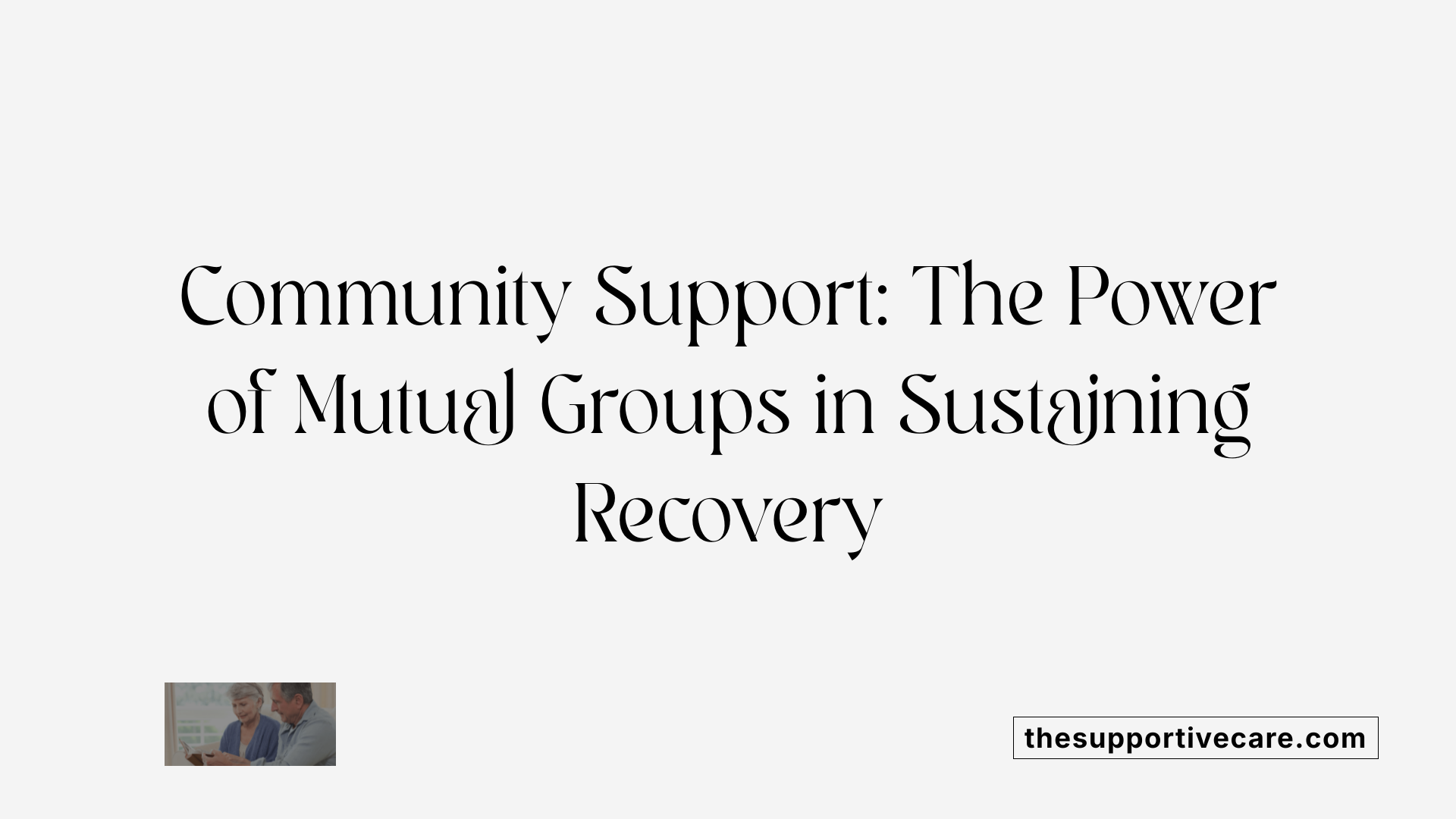
Role of Groups Like Alcoholics Anonymous, SMART Recovery, and LifeRing
Mutual support groups such as Alcoholics Anonymous (AA), SMART Recovery, and LifeRing serve an important role in supporting recovery from alcohol use disorder (AUD) among aging adults. These groups provide a structure that fosters community, shared experience, and encouragement, helping individuals navigate recovery challenges outside of formal treatment settings.
Benefits of Community Support and Active Participation
Community support within these groups creates a sense of belonging and reduces feelings of isolation, which are especially important for older adults who may face loneliness or social withdrawal. Active and regular participation — attending meetings, sharing experiences, and establishing sponsorship relationships — significantly boosts recovery success by reinforcing motivation and accountability.
Twelve-Step Facilitation and Its Adjunct Benefits
Twelve-step facilitation therapy encourages involvement in groups like AA, emphasizing acceptance of addiction and surrender to a higher power as steps toward recovery. While standalone evidence for twelve-step groups is mixed, combining twelve-step facilitation with formal treatment enhances treatment retention and outcomes for older adults, providing an additional layer of psychosocial support.
Support Group Participation and Treatment Retention
Engagement with mutual support groups has been shown to improve treatment retention rates among older adults. The ongoing peer interaction and reinforcement of coping strategies complement behavioral and pharmacological treatments, contributing to sustained abstinence and improved long-term recovery.
| Aspect | Description | Impact on Aging Adults Recovery |
|---|---|---|
| Mutual Support Groups | AA, SMART Recovery, LifeRing | Provides peer support and structured recovery community |
| Community Support | Shared experiences, sponsorship | Reduces isolation, enhances motivation |
| Twelve-Step Facilitation Therapy | Emphasizes acceptance and active involvement | Improves treatment retention when combined with formal care |
| Treatment Retention | Regular participation and active engagement | Promotes sustained abstinence and better long-term outcomes |
Together, these mutual support options create an essential and accessible resource that complements other evidence-based AUD treatments, particularly beneficial for aging adults managing recovery in diverse social contexts.
Adapting Psychosocial Treatments to Older Adults’ Unique Needs
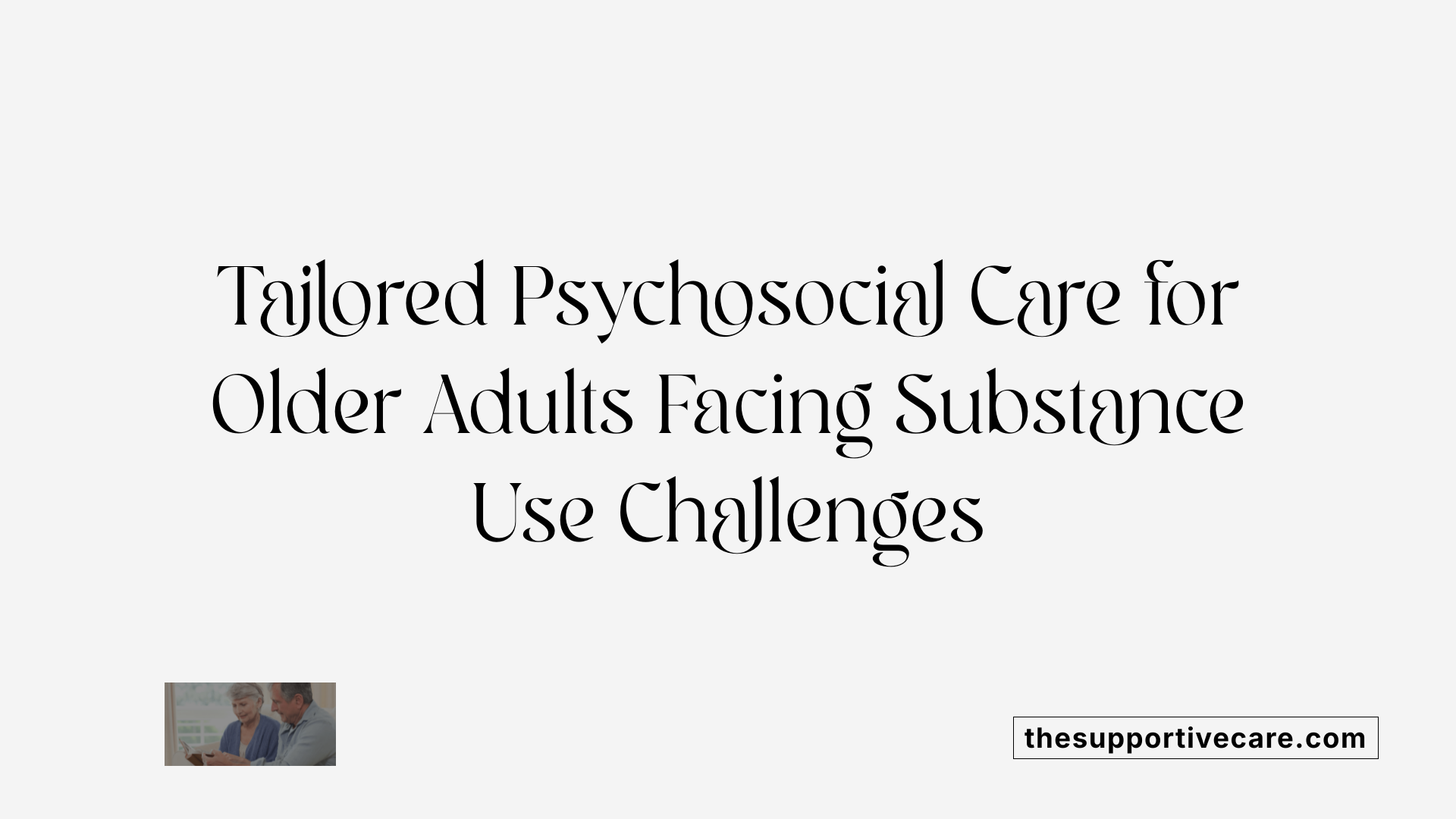
How are interventions like CBT, motivational interviewing, and relapse prevention tailored for older adults?
Psychosocial treatments such as cognitive-behavioral therapy (CBT), motivational interviewing (MI), and relapse prevention are adapted to meet the specific needs of older adults by considering age-related physiological and psychological changes. For instance, CBT is modified to address cognitive slowing and incorporate simpler, more concrete examples relevant to later life experiences. MI techniques emphasize resolving ambivalence and enhancing motivation, often focusing on health concerns and quality of life issues important to aging individuals. Relapse prevention strategies are adjusted to identify older adults’ unique triggers and develop coping skills compatible with their lifestyle and social environment.
How are co-occurring mental health disorders addressed in older adults?
Older adults frequently face co-occurring mental health conditions such as depression, anxiety, or cognitive decline alongside substance misuse. Effective treatment combines psychosocial interventions with specialized care for these psychiatric disorders, though evidence guiding optimal approaches is still limited. Tailoring therapies to simultaneously target substance use and mental health symptoms helps improve adherence and outcomes.
What role do trauma-informed care and acceptance/mindfulness-based interventions play?
Trauma-informed care is essential for older adults who may have histories of trauma affecting their substance use patterns. Integrating acceptance- and mindfulness-based interventions helps these individuals better manage distress and maintain recovery by fostering present-moment awareness and emotional regulation. Such approaches complement traditional behavioral therapies and are associated with positive engagement.
What benefits are seen with longer treatment engagement and how do older adults’ outcomes compare to younger populations?
Longer engagement in psychosocial treatments correlates with improved outcomes in older adults, including sustained abstinence and enhanced well-being. Research reveals that when treatments are age-appropriately adapted, older adults achieve recovery outcomes comparable or even superior to younger populations. This underscores the effectiveness of tailored approaches and the importance of sustained, supportive care in this demographic.
Emerging and Complementary Evidence-Based Therapies
What is Dialectical Behavior Therapy (DBT) and how does it help in addiction treatment?
Dialectical Behavior Therapy (DBT) is designed to address borderline personality disorder and has proven effective for addiction. It focuses on mindfulness, distress tolerance, emotion regulation, and improving interpersonal skills. DBT combines individual and group sessions, helping individuals manage intense emotions and reduce self-destructive behaviors related to substance misuse.
How does Eye Movement Desensitization and Reprocessing (EMDR) support recovery?
EMDR is a trauma-focused therapy that processes past traumatic experiences to lessen their emotional impact. For addiction, EMDR helps individuals confront trauma that may underlie substance use, promoting healthier coping mechanisms and supporting long-term recovery.
What roles do Behavioral Activation (BA) and Acceptance and Commitment Therapy (ACT) play in treatment?
Behavioral Activation (BA) increases engagement in positive, rewarding activities to improve mood and motivation, often addressing underlying depression that can co-occur with substance use disorders. Acceptance and Commitment Therapy (ACT) encourages acceptance of difficult experiences while committing to behavior aligned with personal values, helping patients sustain recovery efforts.
What are Experiential Therapies and how are they used?
Experiential therapies use creative outlets such as art, music, equine therapy, and creative writing to engage patients emotionally. These approaches enable expression of subconscious thoughts and feelings, which can be especially beneficial for individuals who struggle to verbalize their experiences.
How do Psychodynamic and Family Therapies contribute to treatment?
Psychodynamic therapy explores unconscious motivations and resolves internal conflicts that influence substance use. Family therapy involves relatives in treatment to improve communication, support systems, and address relational dynamics that affect recovery. Both therapies help create a supportive environment conducive to sustained abstinence.
These emerging and complementary therapies enrich the treatment landscape by addressing complex psychological and emotional factors involved in substance use disorders, often enhancing traditional approaches for better patient outcomes.
Telehealth and Technology-Based Psychotherapy Options
How effective is telehealth for delivering behavioral health treatments?
Telehealth has proven to be an effective way to deliver behavioral health treatments, increasing accessibility and convenience. It allows patients to attend therapy sessions remotely, reducing barriers such as transportation and stigma associated with in-person visits. Studies show telehealth can maintain treatment quality comparable to traditional face-to-face care, especially when combined with evidence-based approaches like cognitive-behavioral therapy (CBT).
What are computer-based therapies like CBT4CBT?
Computer-based therapies, such as CBT4CBT, provide interactive, structured CBT sessions through digital platforms. These programs help patients learn coping strategies, manage triggers, and improve skills to reduce substance use. CBT4CBT has demonstrated effectiveness as a supplemental treatment and increases engagement by providing flexible, self-paced learning. Such digital therapies are especially helpful for patients who may not have easy access to specialized behavioral health providers.
What are the benefits and challenges of telehealth for older adults?
Telehealth offers significant benefits for older adults, including overcoming mobility limitations and expanding access to specialized care tailored to age-specific needs. It can facilitate early detection and treatment of substance use disorders by featuring routine screening and providing psychosocial interventions adapted for older populations.
However, challenges include the digital divide, as some older adults may lack familiarity with technology or access to reliable internet. Additionally, maintaining personal connection and addressing cognitive or sensory impairments require thoughtful adaptation of digital tools to maximize engagement and effectiveness.
What strategies can expand the behavioral health workforce and improve access?
Efforts to expand the behavioral health workforce include training providers in evidence-based telehealth delivery and integrating digital therapeutics into standard care. The use of telehealth platforms enables clinicians to reach rural or underserved populations effectively.
Practical guides encourage utilizing telehealth alongside traditional programs to increase service capacity. Additionally, policies promoting reimbursement for telehealth services and investment in digital infrastructure are critical for sustained expansion and broader adoption.
Overall, combining telehealth with computer-based therapies and supportive strategies offers promising tools to enhance treatment accessibility and outcomes, particularly for older adults with substance use disorders.
Comprehensive Treatment Levels and Integration of Care
Range of Care Levels from Outpatient to Inpatient and Residential
Treatment for Alcohol Use Disorder (AUD) and other substance use disorders is available at multiple levels of care to meet the varying needs of patients. Most treatment occurs in outpatient settings where individuals can receive counseling and medication while maintaining daily responsibilities. More intensive care settings include intensive outpatient programs (IOP), residential treatment facilities providing 24-hour care in a structured environment, and inpatient hospitalization for acute medical needs. Residential therapeutic communities are also an option but show inconsistent evidence in effectiveness and face challenges with treatment retention.
Role of Medical Detoxification and Aftercare Programs
Detoxification is often the first step in treatment and involves medically supervised withdrawal to safely manage symptoms associated with stopping substance use. Evidence-based medications, including benzodiazepines and anticonvulsants, are used during detox to alleviate withdrawal. Following detox, comprehensive aftercare services are critical to maintaining recovery, including continued outpatient therapy, sober living environments, and mutual support groups such as Alcoholics Anonymous or SMART Recovery, which help prevent relapse through community engagement.
Integration of Medication-Assisted Treatment and Behavioral Therapies
Combining FDA-approved medications like naltrexone, acamprosate, and disulfiram with behavioral interventions enhances treatment outcomes. These medications target different biological mechanisms to reduce cravings, ease withdrawal discomfort, or deter alcohol consumption. Behavioral treatments such as cognitive-behavioral therapy (CBT), motivational enhancement therapy, and contingency management provide patients with skills to manage triggers, cope with stress, and sustain abstinence. Studies show that integrating pharmacotherapy with evidence-based psychosocial treatments consistently offers greater benefits than either approach alone.
Importance of Coordinated Care for Addressing Comorbidities
Many individuals with substance use disorders experience co-occurring mental health conditions like depression, anxiety, or PTSD, complicating treatment. Coordinated care models that integrate addiction treatment with mental health services provide comprehensive support addressing both disorders simultaneously. Tailoring interventions to individual needs—including adaptations for older adults who may exhibit unique physiological and psychosocial challenges—maximizes effectiveness. Telehealth and digital therapeutics further expand access to coordinated treatment and facilitate sustained engagement.
This multidimensional approach, combining varied treatment settings, medical detox, medication-assisted treatment, behavioral therapies, and coordinated care, forms the backbone of effective addiction treatment programs that improve long-term recovery outcomes.
Evidence-Based Psychotherapy in Special Populations and Co-Occurring Disorders
How Are Psychosocial Treatments Adapted for Polydrug Users and Older Adults with Serious Mental Illness?
Psychosocial treatments such as cognitive-behavioral therapy (CBT), motivational interviewing (MI), and contingency management (CM) have been adapted effectively for polydrug users and older adults with serious mental illness. Family interventions and community reinforcement approaches also show promising results by improving engagement and treatment adherence in these populations.
What Challenges Arise in Managing Co-Occurring Psychiatric Disorders?
Managing co-occurring disorders like depression, anxiety, and PTSD complicates substance use treatment. Although effective psychotherapies such as EMDR for PTSD and dialectical behavior therapy (DBT) for emotion regulation exist, evidence guiding integrated treatments remains limited but is evolving. Tailored interventions that address both mental health and substance use symptoms concurrently are crucial.
How Does Combining Pharmacotherapy and Psychotherapy Benefit Treatment?
Research supports combining pharmacotherapy (like naltrexone or acamprosate for alcohol use disorder) with evidence-based behavioral therapies such as CBT, motivational enhancement therapy, or contingency management. This combination leads to improved abstinence rates and better management of withdrawal and cravings, particularly in special populations.
What Is the Current Evidence Regarding Best Practices?
While comprehensive evidence is still developing, the existing research underscores that integrating pharmacological interventions with psychosocial therapies is more effective than either approach alone. Behavioral treatments tailored to special populations, along with medication-assisted therapy, offer the most favorable outcomes in managing complex substance use and co-occurring psychiatric disorders.
The Importance of Early Detection and Routine Screening
Challenges in Recognizing Substance Misuse in Older Adults
Substance misuse in older adults is often overlooked because its symptoms can closely resemble medical conditions or be mistaken for normal aging. Physiological changes such as decreased liver function and muscle mass can mask or confuse signs of alcohol or drug misuse, complicating diagnosis.
Overlapping Symptoms with Medical or Age-Related Changes
Symptoms like cognitive decline, falls, accidents, or mood changes may be attributed to aging or other health issues rather than substance use. This overlap makes it crucial to consider substance misuse as a differential diagnosis when evaluating older patients.
The Role of Healthcare Providers in Screening and Intervention
Healthcare professionals play a vital role in early detection through routine screening in primary care and other medical settings. Early identification enables timely intervention, which can prevent worsening of substance use disorders and improve overall health outcomes.
Benefits of Brief Opportunistic Interventions in Primary Care
Brief opportunistic interventions (BIs) conducted during routine healthcare visits have been shown to reduce risky substance use by about 20-30%. These interventions are especially effective in primary care and emergency settings and offer a practical, evidence-based approach to addressing substance misuse among older adults.
Proactive and continuous screening efforts, combined with effective brief interventions, are essential components for improving addiction treatment outcomes and safeguarding the health of older populations.
Future Directions and Policy Initiatives Supporting Evidence-Based Treatment
How is SAMHSA advancing prevention, treatment, and recovery support?
The Substance Abuse and Mental Health Services Administration (SAMHSA) plays a pivotal role in enhancing prevention, treatment, and recovery services for those with mental health and substance use disorders. Their commitment is demonstrated through funding, policy development, and supportive programs aimed at expanding access to effective care. SAMHSA underscores the importance of combining behavioral health treatments with FDA-approved medications and mutual support networks to improve patient outcomes.
What resources support evidence-based practices?
SAMHSA’s Evidence-Based Practices Resource Center serves clinicians, policymakers, and communities by providing comprehensive tools, guidelines, and manuals. These resources cover a variety of topics, including opioid use disorder, trauma-informed care, and digital therapeutics. Through practical guides and advisory reports, the center facilitates the integration of evidence-based therapies like contingency management, medication-assisted treatment, and psychosocial interventions tailored to diverse populations.
What guidelines promote behavioral and pharmacological treatments?
Guidelines from SAMHSA recommend combining behavioral interventions, such as cognitive-behavioral therapy (CBT), motivational interviewing, and relapse prevention, with pharmacotherapy to enhance treatment effectiveness. For alcohol use disorder (AUD), FDA-approved medications like naltrexone, acamprosate, and disulfiram support abstinence and relapse prevention. The emphasis is on individualized care plans that leverage the complementary benefits of therapies and medications.
How are efforts underway to expand the behavioral health workforce and telehealth access?
To meet growing demand, SAMHSA supports strategies for expanding the behavioral health workforce by offering training resources and promoting trauma-informed care. Telehealth and computer-based therapies, such as CBT4CBT, are increasingly utilized to overcome barriers like geographic isolation and provider shortages. These technologies provide convenient, evidence-based treatment options and have shown efficacy comparable to traditional face-to-face interventions.
What are research directions and implications for protecting cognitive function?
Emerging research highlights the potential for effective substance use treatment to protect cognitive health, particularly in older adults. Removing or reducing harmful substances like alcohol may delay or prevent dementia progression. Future research priorities include tailoring interventions to aging populations, optimizing combined treatments, and examining long-term cognitive outcomes. These efforts align with the broader goal of enhancing quality of life and recovery longevity through scientifically supported approaches.
Towards Holistic and Accessible Addiction Care for Aging Adults
The landscape of addiction treatment for older adults is evolving, emphasizing the integration of evidence-based psychotherapy methods tailored to their distinct physiological and psychosocial needs. Combining behavioral interventions such as CBT, motivational interviewing, and contingency management with FDA-approved medications enhances recovery outcomes. Community support systems and emerging therapies further complement comprehensive approaches, while advances in telehealth technology increase accessibility. Early detection through routine screening remains crucial. Continued research, policy support, and workforce expansion are vital to refine and disseminate effective treatments, with the ultimate goal of improving quality of life and cognitive health in this growing population.
References
- Recommend Evidence-Based Treatment: Know the Options
- Evidence-Based Practices Resource Center
- Treating substance misuse in older adults
- Evidence Based Psychosocial Interventions in Substance ...
- Treatment Methods & Evidence-Based Practices
- Evidence-based therapies
- Evidence-Based Addiction Therapies & Treatments











